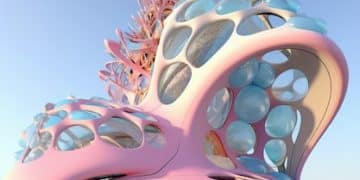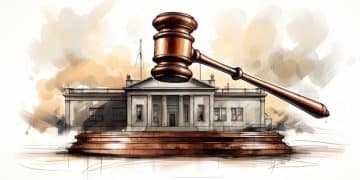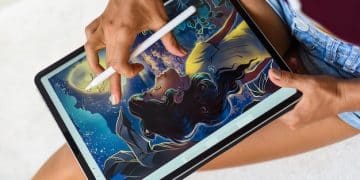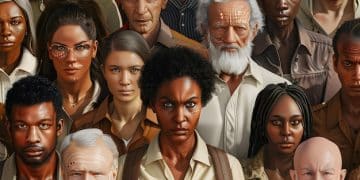The Rise of AI in US Art: Adapting and Thriving as an Artist
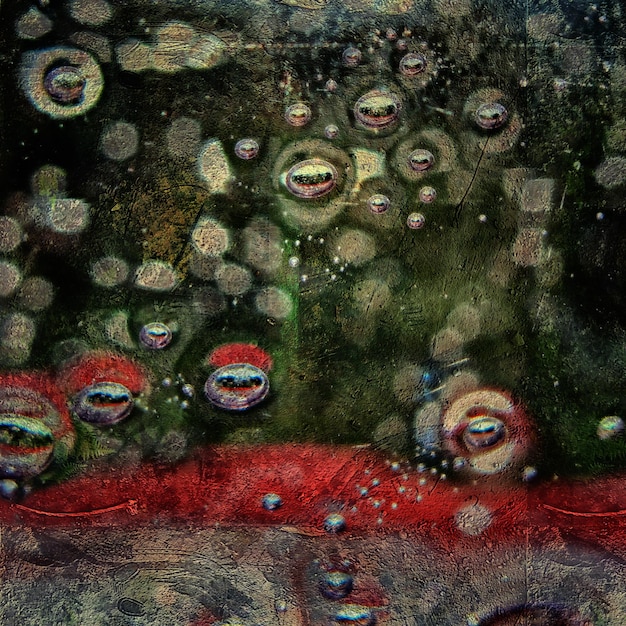
The Rise of AI in US Art: How Artists Can Adapt and Thrive explores how artificial intelligence is reshaping artistic creation, offering opportunities and challenges for artists in the United States to innovate and succeed.
The art world in the US is experiencing a seismic shift with the rise of artificial intelligence. But instead of fearing obsolescence, artists can learn to integrate these new technologies. This article, The Rise of AI in US Art: How Artists Can Adapt and Thrive, examines how to harness AI’s potential and transform art creation.
Understanding the AI Revolution in Art
Artificial intelligence is no longer a futuristic fantasy; it’s a present reality reshaping industries across the board, including the art world. Artists are now faced with a landscape where AI tools can generate images, compose music, and even assist in the design process. Understanding this technological shift is crucial for any artist looking to remain relevant and innovative.
This section delves into the basics of AI’s impact on art and how it can be both a challenge and an opportunity for artists in the United States. By grasping the fundamental principles, artists can begin to explore the possibilities and prepare for the future.
The Basics of AI Art Generation
AI art generation involves using algorithms and machine learning models to create original artwork. These models, often trained on vast datasets of existing art, can produce new pieces in various styles and mediums. Understanding how these tools work is the first step toward leveraging them effectively.
AI as a Collaborative Tool
Instead of viewing AI as a replacement, artists can see it as a powerful assistant. These tools can help with brainstorming, experimenting with different styles, and even automating repetitive tasks, freeing up artists to focus on the more creative aspects of their work.
- Explore AI tools like Midjourney and DALL-E 2 for image generation.
- Use AI to analyze existing artwork and identify trends.
- Experiment with AI to create prototypes and mockups of your art.
The shift towards AI-assisted art is not about replacing human creativity but augmenting it. By embracing these tools, artists can expand their capabilities and explore new artistic horizons. The key is to understand the technology and find ways to integrate it into their existing workflows.

Navigating the Legal and Ethical Landscape
As AI’s role in art grows, the legal and ethical considerations become increasingly important. Issues such as copyright, ownership, and the use of AI-generated content are now central to discussions within the art community. Artists need to be aware of these challenges to navigate this new terrain responsibly.
This section offers insights into the legal and ethical dilemmas that arise with AI art. By understanding these complex issues, artists can make informed decisions and protect their rights in this evolving landscape.
Copyright and Ownership of AI Art
One of the main challenges is determining who owns the copyright to AI-generated art. Is it the artist who prompted the AI, the developers of the AI model, or does the artwork belong to the public domain? The legal framework is still catching up, and it’s crucial for artists to protect their creations.
Ethical Considerations in AI Art
Beyond legal issues, there are also ethical considerations. For example, if an AI model is trained on copyrighted material without permission, it raises questions about plagiarism and fair use. Artists should be mindful of these ethical dilemmas and strive to create art that is both innovative and respectful of existing intellectual property.
- Research current copyright laws related to AI-generated art.
- Use AI tools that offer clear guidelines on ownership and usage rights.
- Be transparent about the use of AI in your artwork.
Navigating the legal and ethical landscape of AI art requires vigilance and a commitment to responsible creation. Artists must stay informed about the evolving legal framework and make ethical choices that respect the rights of others while protecting their own.
Embracing AI for Art Creation
The practical application of AI in art creation can range from simple enhancements to complete transformations of the creative process. Artists are discovering new ways to use these tools, pushing the boundaries of what’s possible and creating art that is both innovative and thought-provoking.
This section provides actionable strategies for artists to integrate AI into their creative workflows. By learning how to effectively use these tools, artists can unlock new possibilities and enhance their artistic expression.
Enhancing Traditional Techniques with AI
AI can be used to enhance traditional art techniques, such as painting, sculpture, and photography. For example, an artist could use AI to generate a series of variations on a painting, exploring different color palettes and compositions before committing to the final piece.
Creating New Art Forms with AI
Beyond enhancing existing techniques, AI can also enable entirely new art forms. Generative art, interactive installations, and AI-driven performances are just a few examples of the exciting possibilities that AI offers. Artists can collaborate with AI to create experiences that were previously unimaginable.
- Experiment with AI to create variations of your existing artwork.
- Use AI to generate new elements for your art, such as textures or patterns.
- Explore AI-driven installations and interactive art experiences.
Embracing AI for art creation is about experimentation and innovation. Artists who are willing to explore the possibilities will find that AI can be a powerful tool for unlocking their creative potential and pushing the boundaries of what art can be.
Developing Essential Skills for the AI Art Era
To thrive in the AI art era, artists need to develop a new set of skills. These skills range from technical proficiency to creative vision and the ability to collaborate with AI tools effectively. By focusing on these essential skills, artists can stay ahead of the curve and make the most of the opportunities that AI offers.
This section outlines the key skills that artists need to cultivate to succeed in the age of AI. By investing in their development, artists can position themselves as leaders in this rapidly evolving field.
Technical Proficiency
While artists don’t need to become expert programmers, a basic understanding of AI algorithms and tools is essential. Learning how to use AI software, understanding the parameters that control AI art generation, and being able to troubleshoot technical issues are all important skills.
Creative Vision and Adaptability
Perhaps the most important skill is the ability to bring a unique creative vision to the AI art process. AI is a tool, and it’s up to the artist to guide it and shape the output. Artists who can adapt their creative vision to the possibilities offered by AI will be the most successful.
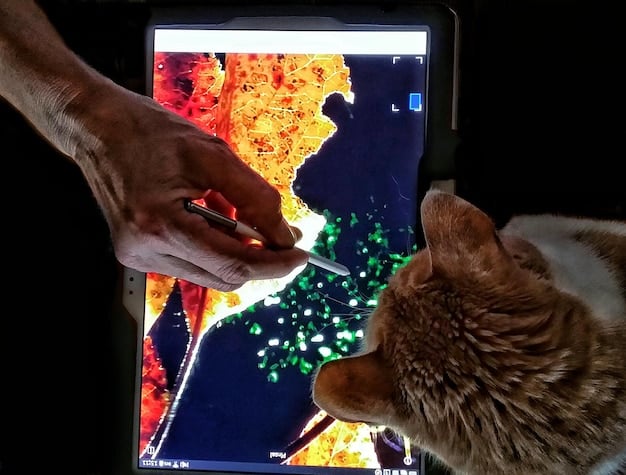
- Take online courses to learn about AI art generation tools.
- Join AI art communities and collaborate with other artists.
- Experiment with different AI tools and techniques.
Developing essential skills for the AI art era is an ongoing process. Artists need to be lifelong learners, constantly updating their knowledge and skills to keep pace with the latest developments. By embracing this mindset, artists can thrive in this exciting and dynamic field.
Monetizing AI Art: New Business Models
The advent of AI art also opens up new avenues for monetization. Traditional business models may not always be suitable for AI-generated art, so artists need to explore innovative ways to generate income. From selling digital assets to offering AI-driven services, the possibilities are vast.
This section explores the emerging business models for AI art. By understanding these opportunities, artists can create sustainable careers in this new landscape.
Selling Digital Assets
AI-generated art can be sold as digital assets, such as images, videos, and 3D models. These assets can be used in a variety of contexts, from advertising and marketing to video games and virtual reality. Platforms like NFT marketplaces also provide new ways to sell and license AI art.
Offering AI-Driven Services
Artists can also offer AI-driven services, such as creating custom AI art for clients or providing AI art consulting for businesses. This approach allows artists to leverage their skills and knowledge to help others integrate AI into their creative processes.
- Explore NFT marketplaces to sell AI-generated art.
- Offer custom AI art services to clients.
- Create and sell brushes, patterns that are AI-assisted for digital art software.
Monetizing AI art requires creativity and entrepreneurship. Artists need to be open to new business models and willing to experiment with different approaches. By doing so, they can create sustainable careers and contribute to the growth of the AI art market.
Building a Community and Network in the AI Art World
The AI art world is still relatively new, which means there’s a strong sense of community and collaboration among artists. Building a network is essential for sharing knowledge, finding opportunities, and supporting each other in this evolving field. Online forums, social media groups, and in-person events all provide valuable networking opportunities.
This section highlights the importance of building a community and network in the AI art world. By connecting with other artists, experts, and enthusiasts, artists can accelerate their learning and unlock new opportunities.
Online Communities and Forums
Online communities and forums are great places to connect with other AI artists, share your work, and ask for feedback. Platforms like Discord, Reddit, and online art forums provide spaces for artists to come together and support each other.
Social Media and Networking Events
Social media platforms like Instagram, Twitter and Behance are great for showcasing AI artwork and connecting with potential collaborators and clients. Attending in-person and virtual networking events can also provide valuable opportunities to meet other artists and learn about the latest trends.
- Join online AI art communities and forums.
- Share your work on social media and engage with other artists.
- Attend AI art events and conferences.
Building a community and network is crucial for success in the AI art world. By connecting with other artists, experts, and enthusiasts, artists can accelerate their learning, find new opportunities, and contribute to the growth of this exciting field. This collaborative approach fosters an environment of shared knowledge and mutual support, benefiting everyone involved.
| Key Point | Brief Description |
|---|---|
| 🤖 AI Basics | Understanding how AI generates art and its potential. |
| ⚖️ Legal Ethics | Navigating copyright and ethical issues in AI art. |
| 🎨 Creation | Using AI to enhance and transform art creation. |
| 🤝 Community | Building a network and community in the AI art world. |
FAQ
▼
AI art is artwork generated through artificial intelligence algorithms, often using machine learning models trained on vast datasets. These models can create original pieces in various styles.
▼
It’s unlikely AI will entirely replace human artists. Rather, it serves as a tool that enhances creativity and allows for new forms of artistic expression, fostering collaboration between humans and machines.
▼
Artists can use strategies like watermarking, staying updated on copyright laws, and contributing to discussions about AI ethics to ensure their rights are respected in the digital age.
▼
Essential skills include technical proficiency with AI software, creative vision to guide AI output, adaptability to new technologies, and entrepreneurial skills to monetize AI-generated art effectively.
▼
Artists can learn through online courses, AI art communities on platforms like Discord and Reddit, social media groups, art forums, and by attending AI art events and conferences.
Conclusion
The rise of AI in US art presents both challenges and opportunities for artists. By understanding the technology, navigating the legal and ethical landscape, and developing new skills, artists can adapt and thrive in this new era. Embracing AI as a tool for creativity and innovation can lead to exciting new forms of artistic expression and monetization.
